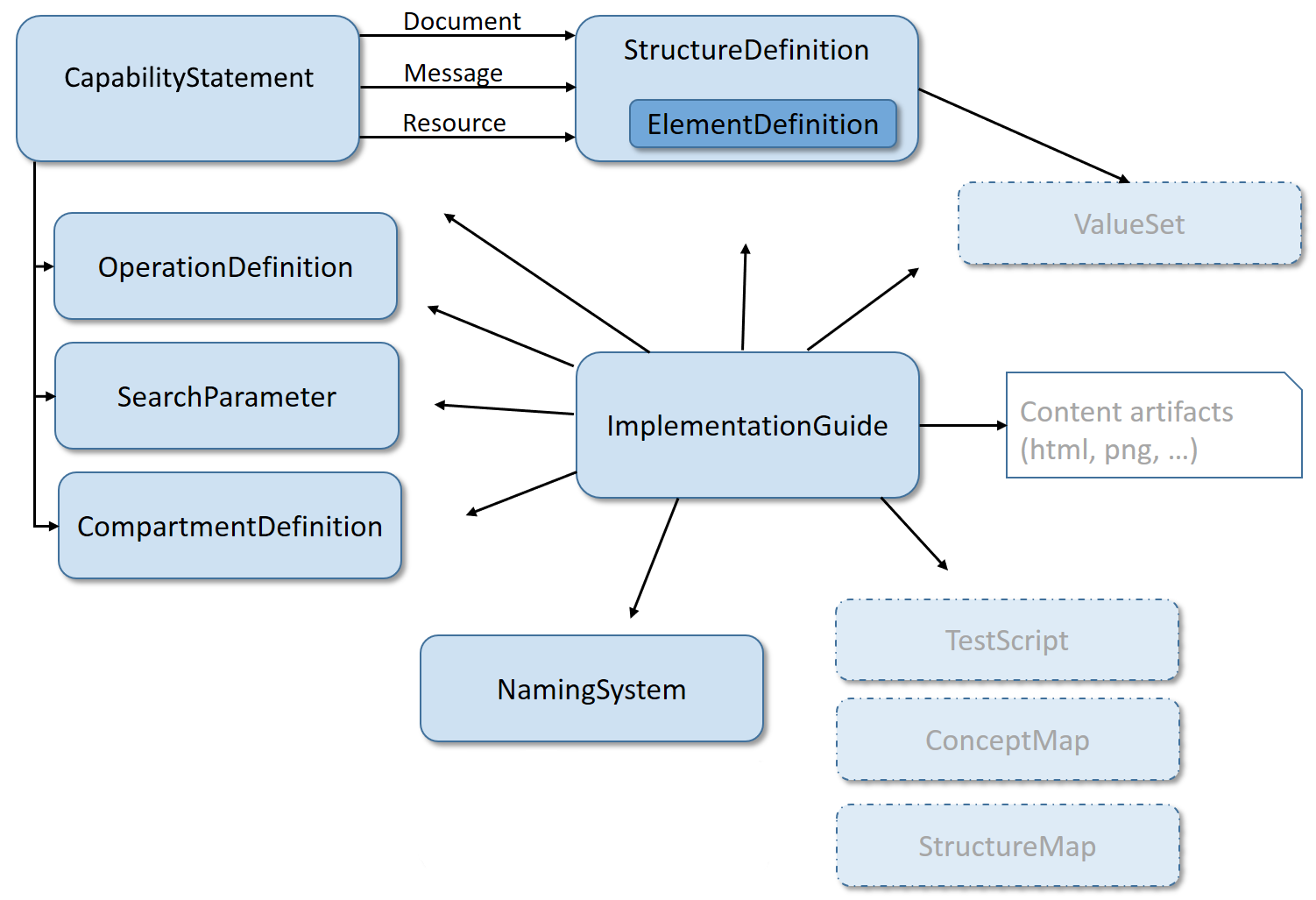This is the Continuous Integration Build of FHIR (will be incorrect/inconsistent at times).
See the Directory of published versions 
Responsible Owner: Work Group FHIR Infrastructure  | Standards Status: Informative |
The Conformance Module represents metadata about the datatypes, resources and API features of the FHIR specification and can be used to create derived specifications.
The core FHIR specification describes a set of resources, frameworks and APIs that are used in many different contexts in healthcare. However, there is wide variability between jurisdictions and across the healthcare ecosystem around practices, requirements, regulations, education and what actions are feasible and/or beneficial.
For this reason, the FHIR specification is a "platform specification" - it creates a common platform or foundation on which a variety of different solutions are implemented. As a consequence, this specification usually requires further adaptation to particular contexts of use.
Typically, these adaptations specify:
Note that because of the nature of the healthcare ecosystem, there may be multiple overlapping sets of adaptations - by healthcare domain, by country, by institution, and/or by vendor/implementation.
FHIR provides a set of resources that can be used to represent and share the adaptations listed above in a computable fashion. These resources are collectively called the conformance resources. Although these conformance resources can be used in isolation they are typically used in the context of an Implementation Guide or a Capability Statement:
The content of an Implementation Guide is described using the ImplementationGuide resource, while the capability statement is represented by the CapabilityStatement resource. These two resources make use of the complete set of conformance resources to fully capture the set of adaptations they represent. Note that the CapabilityStatement resource is one of the conformance resources, the first just describing the capabilities of a system, while the latter is the set of all conformance resources, including:
Conformance resources may be used independently, not just within the context of an ImplementationGuide resource or capability statement. See the section Common use cases for examples of such uses.
The conformance resources and their relationships are shown below:

Resources shown with a dotted box are described in other sections of the specification:
ValueSet, ConceptMap and StructureMap are from the section on terminology,
TestScript is part of the section on Implementer Support.
The conformance resources do not represent patient-related data, and as such are less susceptible to data breaching. Some caution is required however:
StructureDefinitions may contain invariants formulated as structured
expressions that are evaluated by external engines (i.e., FHIRPath), which -if improperly
sandboxed- could provide low-level access to the systemConformance resources are commonly used as part of an Implementation Guide or CapabilityStatement resource. There are many ways to use the resources independently however, including:
StructureDefinitions to
claim conformance to the rules laid out in those StructureDefinitionsCapabilityStatement resources, effectively functioning
as a discovery endpoint for services within an organizationStructureDefinitions and
OperationDefinitions to generate code that represents the structures as
classes and operations as remotely callable functions to provide an easier programming
model to a software developer. NamingSystem resources, so vendors and
implementers can quickly look up the URLs or oids for a given terminology or identifier
system.Ongoing feedback is welcome on all the conformance resources, particularly based on implementation experience.
The following resources are in maintenance mode:

The GraphDefinition resource is still subject to additional change based on implementation experience,
so is found in the API Incubator 